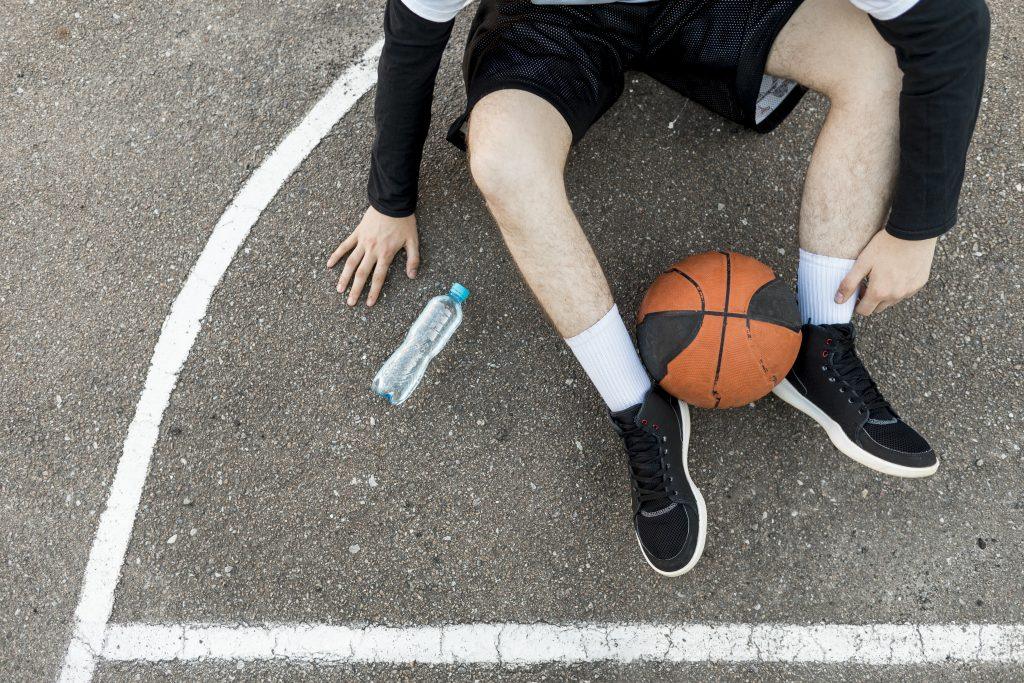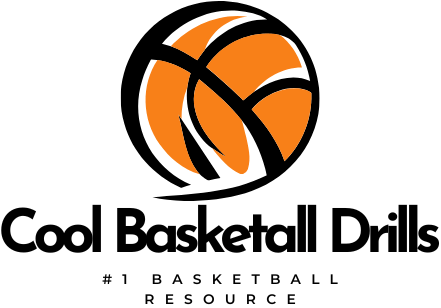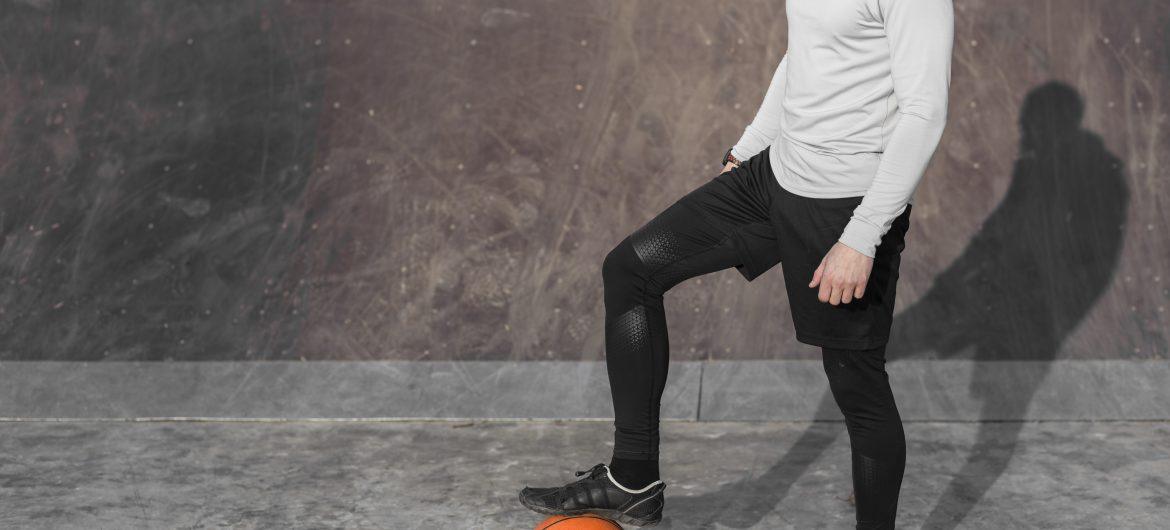Basketball footwork drills are fundamental for improving your skill set and performance. Through consistent practice, these drills not only enhance agility and coordination but will also help with your game strategy and team dynamics.
The Importance of Footwork in Basketball
In basketball, footwork is the foundation for all your physical movements on the court. A player’s ability to maneuver effectively often decides the flow of the game.
Footwork influences everything from shooting accuracy to defensive positioning. Athletes who prioritize footwork will make great improvements in their overall performance.
For players aiming to succeed, mastering these drills is non-negotiable. The balance, speed, and precision developed through targeted practice are key to outmaneuvering opponents and performing strategic plays with finesse.
Basketball Footwork Drills for Balance
In basketball, maintaining balance is crucial, especially when under pressure. Effective basketaball footwork drills emphasize balance and stability to help players maintain control over their movements.
Square Balance Drill
- Use four cones or markers to form a square, about 5 feet apart.
- Start in the center of the square in a balanced, athletic stance.
- Begin by stepping quickly but under control to one cone (e.g., the front-right cone).
- Stop at the cone and hold a balanced stance for 3 seconds, keeping your chest up and weight evenly distributed.
- Push off and return to the center, maintaining balance throughout the movement. Repeat for each cone in the square, alternating directions (e.g., front-left, back-right, back-left).
- Perform 2–3 sets of 10–12 total movements.
- Focus on controlled, balanced steps.
- Avoid leaning too far in any direction to maintain stability.
- Gradually increase speed as you improve balance.
Pivot and Hold Drill
- Use a basketball (optional) and stand in an open space.
- Start in a balanced, triple-threat position with knees bent and feet shoulder-width apart.
- Step forward with one foot, plant it firmly, and pivot 90 degrees on your planted foot.
- Hold the pivoted position for 3 seconds, maintaining balance and a low stance.
- Return to your starting position and repeat, alternating pivot directions (clockwise and counterclockwise).
- Perform 2–3 sets of 10 pivots in each direction.
- Keep your weight centered over your pivot foot.
- Maintain a low, athletic stance for better control.
- Focus on smooth pivots without losing balance.
Agility Basketball Footwork Drills
Several drills are curated to improve a player’s footwork. Integrating agility ladder exercises into regular practice can significantly enhance quickness and coordination. These include:
Crossover Quick Steps Drill
- Place an agility ladder flat on the ground.
- Stand sideways to the ladder at one end
- Start with your right foot in the first ladder square and your left foot outside the ladder.
- Quickly step your left foot into the next square, followed by your right foot stepping outside the ladder.
- Continue this “in-out” pattern, moving laterally down the ladder.
- Once you reach the end, switch sides and repeat back to the starting point.
- Stay on the balls of your feet.
- Maintain a low, defensive stance throughout the drill.
- Keep your movements sharp and precise.
- Perform 3 sets, increasing speed with each round.
1-2 Pivot Drill
- Place an agility ladder flat on the ground.
- Stand at one end of the ladder, facing forward, with a basketball (optional).
- Step your right foot into the first square, followed by your left foot (1-2 step).
- Plant your pivot foot (right foot), turn 90 degrees, and simulate a pivot motion.
- Step back into the next square with the same 1-2 motion (right-left) and repeat the pivot in the opposite direction.
- Continue this pattern through the entire ladder. At the end, dribble or shoot the ball (if using one) as a finisher.
- Focus on controlled pivots with smooth transitions.
- Keep your chest up and eyes forward.Perform 2-3 sets, emphasizing precision and control.
These drills are simple yet effective in building a solid foundation in footwork for basketball players at any level.
Lateral Agility Basketball Footwork Drills
Lateral agility is another critical component of basketball. The ability to move swiftly side-to-side can spell the difference between an effective defense and a missed opportunity. The following drills focus on enhancing lateral movement:
Lateral Cone Shuffle Drill
- Place 3 cones in a straight line about 5–7 feet apart.
- Start in a low defensive stance at the middle cone.
- Shuffle laterally to the cone on your right, touch it with your hand, and stay low.
- Quickly shuffle back to the middle cone, touch it, and then shuffle to the cone on your left.
- Repeat this pattern for 30 seconds, focusing on maintaining a low stance and controlled movements.
- Rest for 30 seconds and perform 3–5 rounds.
- Keep your chest up and your feet wide. Avoid crossing your feet during shuffles.
- Stay on the balls of your feet for quick, explosive steps.
Side-to-Side Ladder Drill
- Lay an agility ladder flat on the ground.
- Stand to the side of the ladder, facing forward.
- Step your right foot into the first square, followed by your left foot.
- Immediately step your right foot out to the right side of the ladder, followed by your left foot.
- Continue this “in-in-out-out” pattern, moving laterally along the ladder.
- Once you reach the end, turn around and repeat in the opposite direction.
- Perform 3–4 sets, increasing speed with each round.
- Keep your knees slightly bent and your body low.
- Focus on quick, precise foot placement inside and outside the ladder.
- Use your arms for balance and rhythm.

Intergrating Footwork Drills Into Practice
To get the best results, integrating footwork drills into your daily practice is essential. Coaches should design routines that balance complexity and repetition, ensuring players progressively improve their skills.
Designing an Effective Footwork Drill Routine
When making a practice routine, it’s important to focus on variety and challenge. A well-structured routine might include agility ladder drills, lateral agility exercises, and shooting footwork drills. Regular feedback and adjustments based on player performance can keep training sessions effective.
Common Footwork Mistakes and How to Avoid Them
Players often make common mistakes in footwork that can negatively affect their performance. Addressing these requires lots of practice and attention to detail. A common issue is balance, which can be improved through stability exercises like balance boards and specific drills.
Use feedback from your coaches and teammates to continue to refine techniques, and to make sure any mistakes you are making are quickly corrected to build a strong foundation in footwork.
The Role of Technology in Footwork Training
Modern technology can also offer new ways for refining basketball footwork. For example, Video analysis tools can help provide insights into a player’s movements, highlighting areas that need improvement. Players can watch their own footwork in action and understand mistakes more clearly.
Nutrition and Physical Conditioning
Nutrition and conditioning play significant roles in the effectiveness of basketball footwork drills. A well-balanced diet supports physical training, providing the energy and nutrients necessary for peak performance.
Recent research shows the importance of tailored nutrition plans for athletes, focusing on things like getting the right amount of protein and hydration.
Complementing footwork drills with strength training ensures players have the muscular endurance to maintain high performance levels throughout games.
Success Stories From Professional Players
Looking at real-world examples can offer you valuable insights into the importance of footwork training. Many professional players attribute their success to rigorous footwork practice.
For instance, recent athletes who’ve shown marked improvement have often cited focused drilling as a key factor in their athletic development.
Several NBA stars have shared how footwork drills have helped their skills, allowing them to climb to the top of the sport. These stories are not just motivational but serve as learning opportunities for aspiring players seeking similar success in their basketball journey.
Through disciplined practice and innovative training, players can master the art of footwork, paving the way for on-court excellence.


